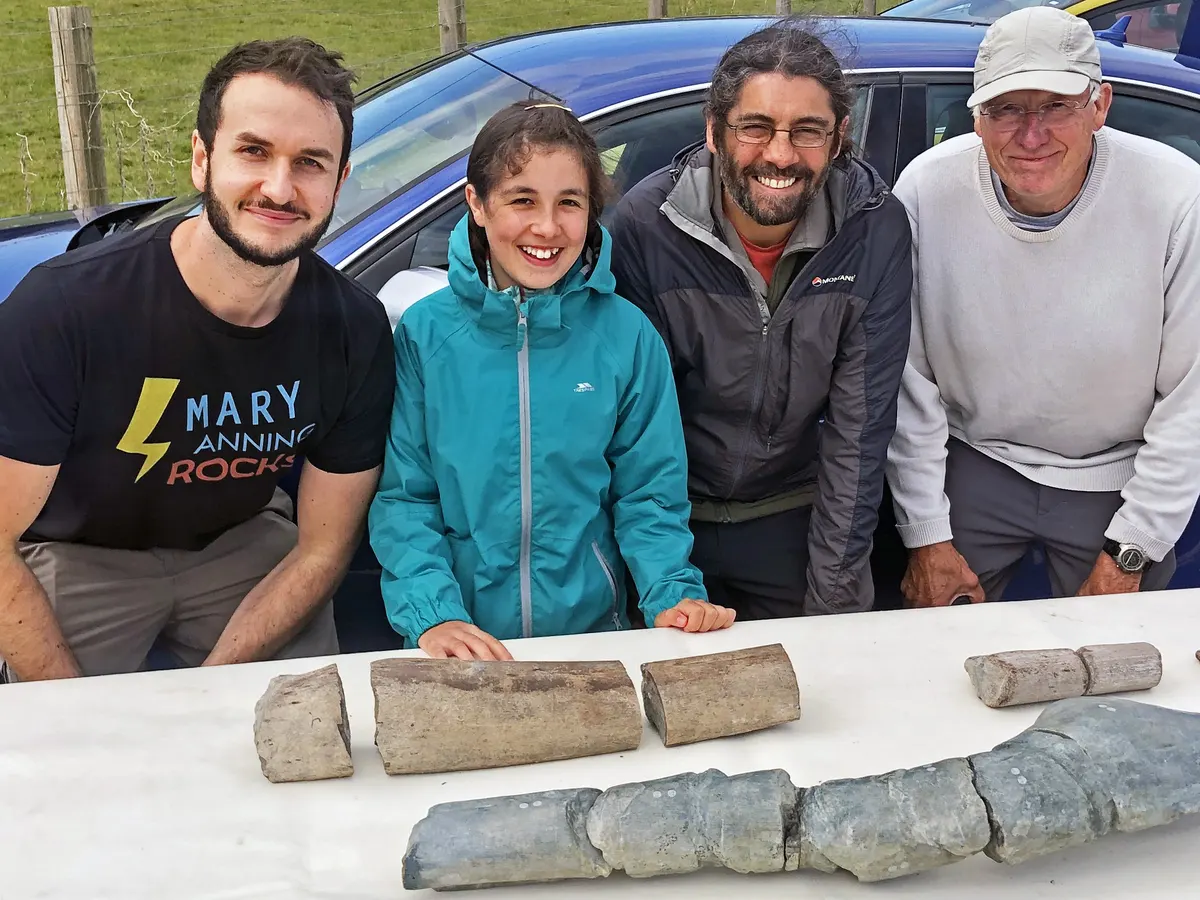By: Phoebe Huang
Children are commonly stereotyped as merely energetic creatures running around and playing. We sometimes forget that children possess strong imagination and wonder. For a long time, kids have been making discoveries that affect our lives in unprecedented ways. Eleven year old Frank Epperson who accidentally invented the Popsicle. 12 year old Mary-Anning discovered the first identified specimen of an ichthyosaur in 1811. And most recently, 11 year old Ruby Reynolds upended our understanding of the Ichthyosaur.
Now 15, Ruby and her father, Justin Reynolds, have been fossil hunting for more than 12 years. When they went to Blue Anchor, a village around River Severn, they noticed a fossilized bone sitting on a rock.
The two adventurers, who had already found several fossilized bones on previous outings, had never witnessed one this big, “We were both excited as we had never found a piece of fossilized bone as big as this before,” Mr. Reynolds said. After finding the first piece, Ruby was quick to continue searching for more, and it didn’t take long before she found another large piece of bone. They took the bone fragments home and started their research.
Their research led to the guess that the fragments were from the ichthyosaur. Its name meaning “fish lizard” in Greek, the ichthyosaur once dominated the oceans for millions of years and had a place on top of the food chain. Despite it being a prehistoric animal, ichthyosaurs are actually not dinosaurs, but a separate group of marine vertebrates. The ichthyosaur has been estimated to have shark-like features like a vertical tail, a fin, basketball shaped eyes, and other features like a pointy mouth.
A major hint towards the identification of the bone fragments came from a paper from 2018 written by Dean Lomax and Paul de Salle, two fossil collectors. The paper mentioned the finding of similar bone fragments, believed to be from the jawbone of a giant ichthyosaur that lived about 202 million years ago. However, the scientists that worked on that fossil concluded that there wasn’t enough fossil to designate a new species. But Ruby’s new discovery changed this all.
The father and daughter contacted Mr.Lomax and Mr. de la Salle who joined the duo on collecting trips in Blue Anchor. They dug the area with shovels and found about half a complete bone that is estimated to be 7 feet long. Many features of the bone’s shapes provide clues that it came from an ichthyosaur. To confirm their suspicion, they invited paleontologist Marcello Perillo to conduct inspections. Under a microscope, he saw crisscrossed collagen fibers, an ichthyosaur trait and noticed that it hadn’t completed its growth despite its size.
“Having two examples of the same bone that preserved all the same unique features, from the same geologic time zone, supported the identification that we’ve kind of toyed around with before, that it’s got to be something new,” Dr. Lomax said. “That’s when it really got exciting.” More research suggests that theur reptile could have been up to 82 feet long, competing with the blue whale. More discoveries are to be made.
This discovery newly points out the importance of amateur inventors and discoverers whose passions lead to new breakthroughs. Further proving this, Ruby Reynolds said: “I didn’t realize when I first found the piece of ichthyosaur bone how important it was and what it would lead to. I think the role that young people can play in science is to enjoy the journey of exploring as you never know where a discovery may take you.”











